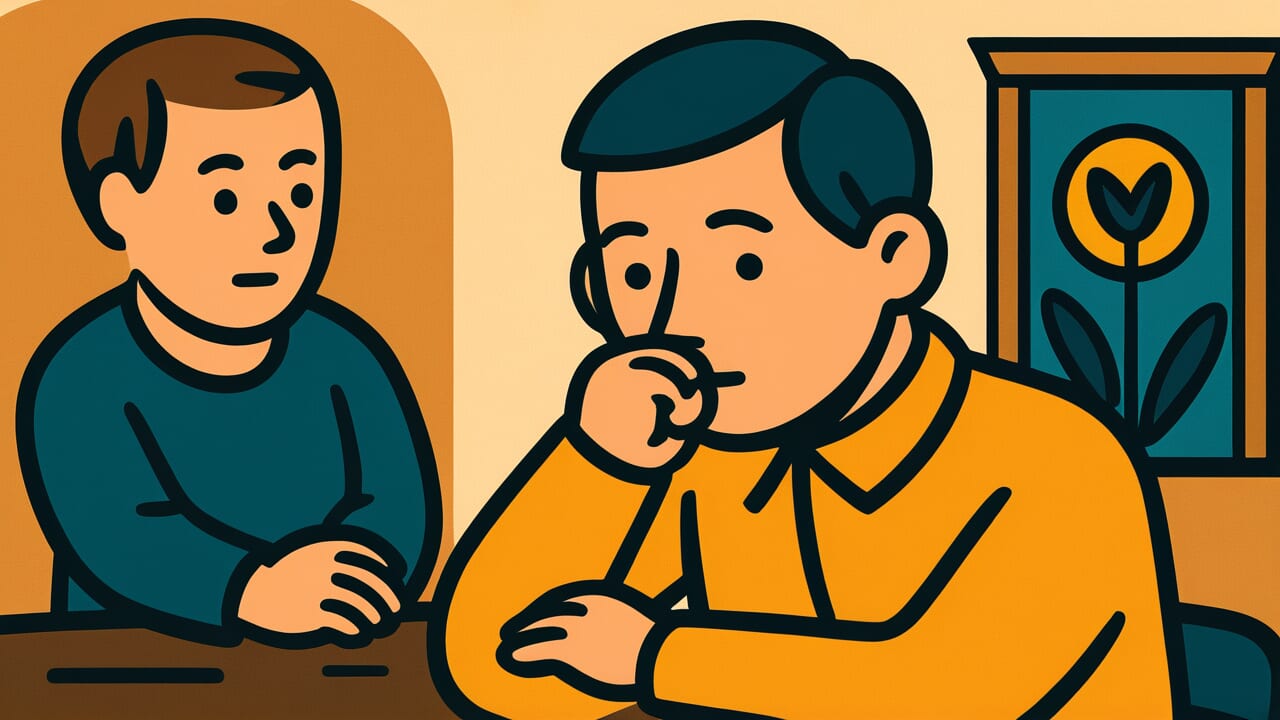How to Read “Clamp thinking”
Kasugai jian
Meaning of “Clamp thinking”
“Clamp thinking” is a proverb that means devising ways to connect things or people, just like a clamp does.
It teaches the importance of thinking about how to join things together to maintain relationships and make everything work smoothly.
This proverb is used when mediating between people with opposing opinions or coordinating different organizations and departments.
It emphasizes that deep consideration is needed to firmly bind relationships, not just superficial adjustments.
Even today, it describes the attitude of people who lead teams or serve as mediators.
Just as clamps support buildings from hidden places, this phrase values those who work quietly for the whole, even without recognition.
Origin and Etymology
The “kasugai” in “Clamp thinking” refers to a U-shaped or staple-shaped metal fastener used to join pieces of wood together.
This tool has been used in construction and carpentry since ancient times, serving the role of firmly connecting two pieces of timber.
No clear written records explain the exact origin of this proverb. However, it certainly arose from the function of the clamp tool itself.
Clamps are inconspicuous, yet they play a crucial role in supporting building structures. They firmly connect materials from places that are hard to see from the surface.
By combining it with the word “thinking,” the proverb expresses more than just physical connection.
It emphasizes the importance of using wisdom to maintain human relationships and connections between things.
Just as clamp craftsmen must place the right clamp in the right location, we need to think about where and how to connect things in human relationships.
This teaching is embedded in the proverb.
The prevailing theory is that such expressions arose within Edo period craftsman culture, applying tool characteristics to human relationships.
Through their daily work, craftsmen must have deeply felt the difficulty and importance of connecting things.
Interesting Facts
The clamp also appears in another proverb: “A child is a clamp.”
This means that children strengthen the bond between husband and wife.
It’s fascinating that the same clamp tool is used as a symbol of connection in multiple proverbs.
Clamps come in various shapes and have been used differently depending on their purpose.
From simple U-shapes to twisted ones, and those with different lengths and thicknesses, craftsmen had the wisdom to select the optimal clamp for what they were connecting.
This selection skill was truly the practice of “Clamp thinking.”
Usage Examples
- When departments aren’t coordinating well, that’s when Clamp thinking is needed
- If you’re standing between two people with opposing opinions, you must proceed carefully with Clamp thinking
Universal Wisdom
The proverb “Clamp thinking” teaches us that “connecting” in human society is not a simple task.
It requires deep consideration.
We all live within various relationships. Family, friends, workplace colleagues, local communities.
Sometimes cracks appear in these relationships, or distance grows between people.
At such times, we need to think about how to truly maintain connections, not just patch things up superficially.
What’s interesting is that this proverb uses “Clamp thinking” rather than “driving in a clamp.”
It emphasizes the importance of thinking before action. In human relationships, hasty solutions often backfire.
Consider the other person’s position, overall balance, and long-term effects before finding the best method.
This carefulness is the secret to maintaining relationships long-term.
Also significant is that clamps are inconspicuous. People who fulfill connecting roles don’t necessarily stand on the main stage.
Rather, they quietly support the whole from behind the scenes.
Our ancestors deeply understood the value of such unsung heroes.
When AI Hears This
The human brain actually functions worse when there are too many choices.
In psychologist Sheena Iyengar’s experiment, a store displaying only 6 types of jam had a purchase rate 10 times higher than one displaying 24 types.
This phenomenon is called the “paradox of choice.”
“Thinking within constraints,” as shown by Clamp thinking, actually creates an ideal state for the brain.
For example, haiku has the strict constraint of 5-7-5 syllables. But precisely because of this, poets desperately think to cut away words and leave only the essence.
With unconstrained prose, people tend to write on and on, making it harder to reach deep expression.
Cognitive science calls this “cognitive tunneling.” By narrowing choices, the brain’s energy concentrates on one point.
This allows surprisingly deep exploration within that limited range.
Google research also found that giving engineers complete freedom to “do whatever you like” produced fewer innovative ideas.
Imposing constraints like “solve this using only this technology” generated three times more innovative ideas.
Being bound by the clamp as a fastener frees people from useless hesitation.
They can concentrate their thinking on what truly matters. This is the truth about creativity that brain science proves.
Lessons for Today
“Clamp thinking” teaches modern people the importance of valuing relationships.
In pursuing efficiency and results, we tend to neglect connections between people.
But no matter how excellent individuals are, without efforts to connect them, great power cannot emerge.
Modern society especially requires people with diverse values to work together.
When facing conflicting opinions or cultural differences, this proverb’s wisdom becomes vital.
Rather than trying to change others, think about how to cooperate while bringing out each other’s strengths.
This thinking is the key to maximizing team power.
Also, recognize the value of taking on a connecting role. When we think of leadership, we imagine someone standing in front and pulling everyone forward.
But the role of connecting members and harmonizing the whole is equally important.
If you can bridge between people around you, that’s a major contribution.
Even if it’s not conspicuous, you’ll definitely become a force supporting the whole.



Comments